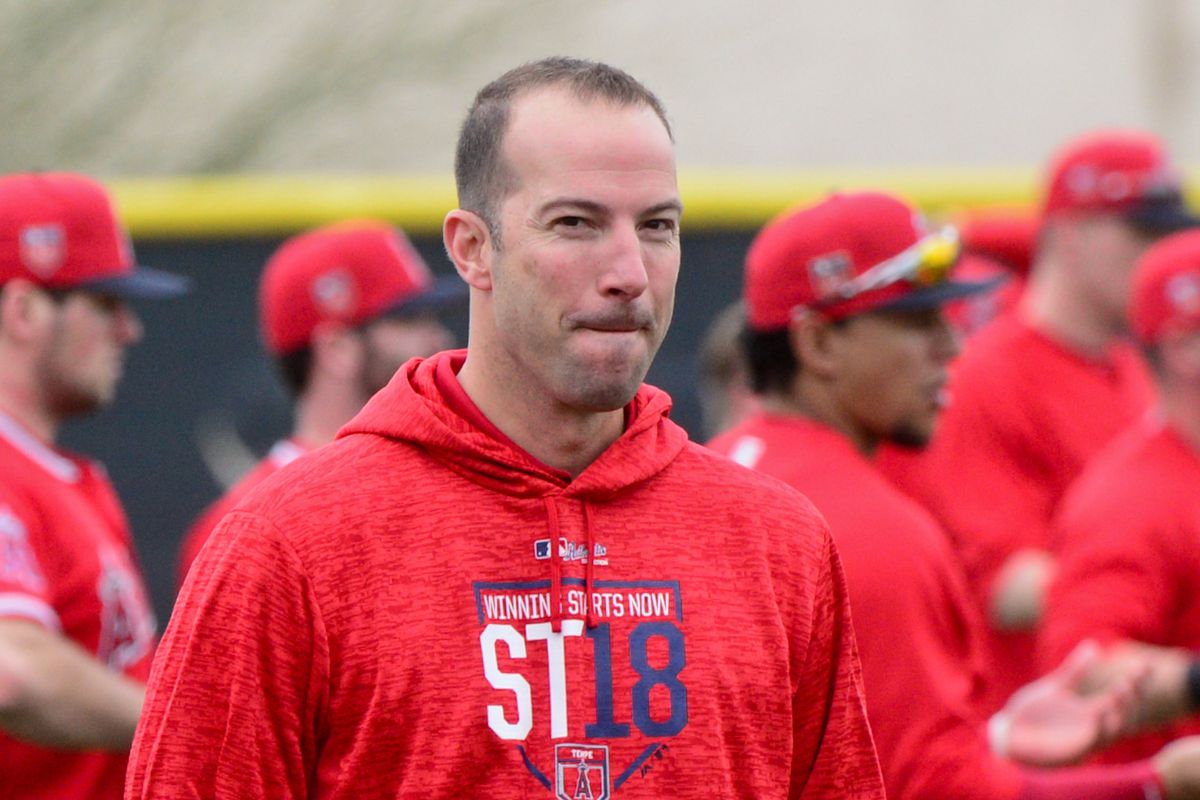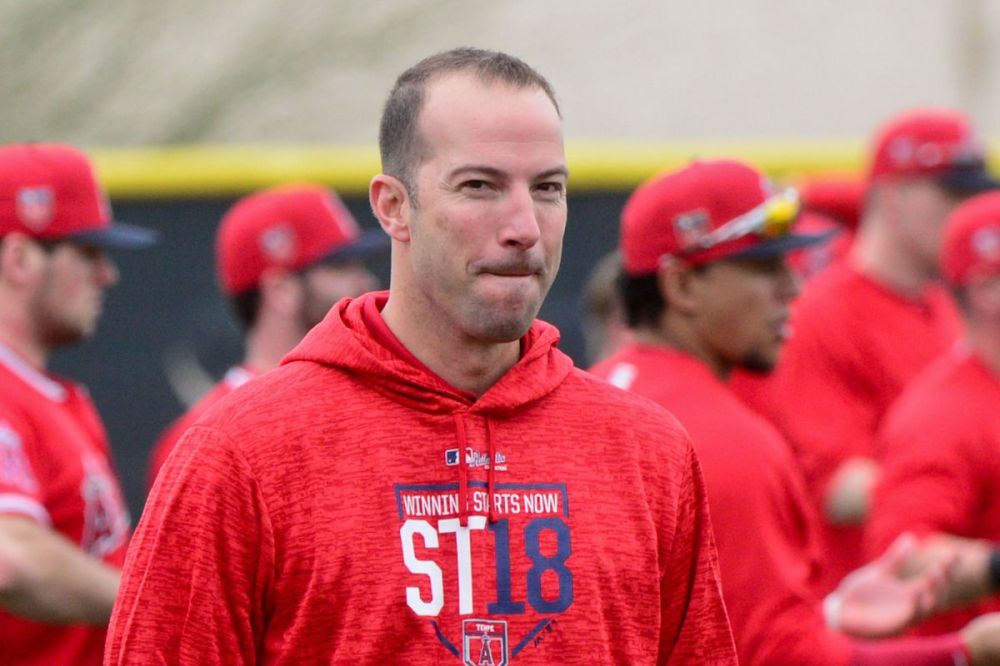By Jonathan Northrop, AngelsWin.com Senior Writer
There are some who are disappointed with Eppler’s relatively modest off-season so far: he didn’t sign any big name free agents, whether intentionally or because they simply wanted to play elsewhere. No Corbin, Ramos, Happ, Eovaldi, Morton, Donaldson, Familia, etc – all players that would have significantly improved the team. Instead we got a strange group of players in Matt Harvey, Trevor Cahill, Justin Bour, Jonathan Lucroy, and Kevan Smith–not to mention his usual few clean peanuts.
Now the offseason isn’t over. The two biggest fish–Bryce Harper and Manny Machado–remain on the board, as well as the top free agent catcher, Yasmani Grandal, and top reliever, Craig Kimbrel. There are also quite a few other interesting options such as David Robertson, Jed Lowrie, Dallas Keuchel, Mike Moustakas, Asdrubal Cabrera, Marwin Gonzalez, DJ Le Mahieu, Brian Dozier, etc. And of course there’s Kikuchi.
But the Angels, presumably, only have another $10-15M to spend. That pretty much prices them out of Harper, Machado, and Keuchel. Kimbrel seems unlikely, and if Grandal still expects 4/$60M+, he won’t be donning an Angels uniform. Maybe the Angels take a flier on a reliever as well as an infielder, although it is also possible they are basically set with what they have.
Eppler has been known to surprise us (e.g. the Andrelton Simmons trade). But the moves so far tell us quite a bit about what his plan is. Consider that they are all one-year deals for players mostly coming off down years, who are solid bets to provide decent returns, but also with small chances of being huge bargains if they rediscover former glories. In other words, they aren’t the type of players that you acquire if you are dead-set on competing in 2019; they are the type of players you acquire if your focus is on the future and are filling holes in the mean-time, yet also don’t want to write off your chances of competing in 2019. In other words, they are the type of players that you can hope will surprise, but probably shoudn’t expect to.
If Eppler was focusing on the so-called “Trout Window” of 2019-20, he’d have gone hard after a more reliable starter–if not Corbin, then certainly Keuchel or Happ. He’d have signed at least one elite reliever, and have upgraded the offense in some significant way – either offering more to Ramos or signing Grandal. He also could have traded some of their prospect capital for further upgrades. A few other tweaks and the team could have been a good bet for 90 wins. Yes, it would have pushed the budget up higher, but he could have done so while staying under the salary cap.
But the problem with that approach is that while it makes the team better over the next few years, it lessens the chances of long-term success through tying up funds in more good but non-premium players (Keuchel being a prime example). The Angels already have a near-term salary problem, with $80M owed to three players in 2019 (Trout, Pujols, Upton), $84M to the same three in 2020 (plus another $15M to Simmons, to make it $100M for four), and if we assume that Trout is extended for $40M/year and Simmons for $20M/yr starting in 2021, that’s $113M for four players in 2021. That’s also the year Tyler Skaggs hits free agency and Shohei Ohtani has his first arbitration year. Thankfully Cozart ($12.67M/yr) comes off the books, so that helps a bit.
In 2022, the Angels will (hopefully) be paying Trout, Simmons, and Upton something like $90M, but then Upton comes off the books, but then you have to factor in extensions for various players, rising arbitration, etc.
Fielding a competitive baseball team is expensive. Unless you’re willing to spend $200M+ a year, you need to be savvy and try to fill as much of your roster with low-cost talent. The best way to do that is through farm development. You focus on growing talent from within, then you extend the best of that talent, and augment the team through free agency and trades. But you protect that farm talent as best you can, because it is the source of your low-cost talent.
The temptation for many a GM is to trade that talent for “Proven Veterans.” Sometimes this is the right thing to do (e.g. Simmons), but sometimes it is devastating, both by leaving the farm barren of talent and requiring more money spent on free agency, and you end up with crippling albatrosses like Wells, Pujols, and Hamilton.
Back to 2019. What I see Eppler doing is focusing on the 2020s. He hopes to be competitive in 2019–that’s why he did spend some money, rather than just “playing the kids.” But he refuses to dip into the quickly improving–but still delicate–farm system. The Angels, by general consensus, have a farm system ranked somewhere around 10th in the majors. A big trade or two could quickly set them back to around 20th. Continued careful cultivation for another year or two puts them in the top 5.
Now the farm rankings aren’t important – they are rather subjective and conjectural, after all. But what they represent is the point: the quantity and quality of talent. The farm system is getting riper year by year, but isn’t quite there yet. In another year or so, it will really start bearing fruit as players like Canning, Suarez, Thaiss, Rengifo, Adell, Marsh, Jones, and Sandoval start contributing on the major league level. Further waves include Soriano, C Rodriguez, Hernandez, Bradish, Jackson, Knowles, Adams, Deveaux, and Maitan.
Last year we saw rookies such as Ohtani, Barria, Anderson, Buttrey, Fletcher, Ward, and Hermosillo. Most of these guys will get better in 2019, when we’ll see Canning, Suarez, Rengifo, and probably Thaiss and Adell. In 2020 we’ll see Marsh, Jones, Sandoval, and probably others. In other words, each year will see the graduation of promising young talent, with a cumulative effect of both increasing the talent in Anaheim, and also decreasing the need for higher price free agents.
Eppler knows this, and doesn’t want to a) trade this talent away, and b) block the talent with older, more expensive and lower upside players.
Now obviously there’s a balance. It is easy to overrate prospects, and probably only a few of the guys I mentioned will become stars, a few more impact players, some quality regulars, and a bunch will be either bench players or minor league flame-outs. But again, that talent pool represents the priceless commodity of “low-cost, high-upside talent” and it has to be protected.
The plan for 2019 is, again, to try to field a wildcard-capable team, but not at the expense of the future. My guess is that Eppler looks at the AL and thinks, “I can either spend big and trade away talent and improve my chances of making a wildcard but not win the division, or spend less, keep the talent, and still have a decent shot at a wildcard.” In other words, the Angels almost certainly couldn’t seriously compete for the division or be a lock for the playoffs in 2019, and the cost to simply improve wildcard chances in the short term is just too great, and too debilitating to the franchise in the long-term.
2020 will be a further step forward, with more of that young talent graduating and maturing. By 2021 that young talent should be really starting to flourish and be the core of the 25-man roster. In fact, I could see a 2021 team that is comprised mostly of players below age 28, except for a few notable exceptions: Trout, Simmons, possibly Upton, maybe one of Skaggs or Heaney, a few others.
So the Eppler plan is to continue strengthening the farm, while retooling in the majors in ways that give the team a chance to compete over the next couple years, but with the eye of turning this franchise into a farm-driven powerhouse in the 2020s.
Its a good plan, but requires patience.
Add The Sports Daily to your Google News Feed!

